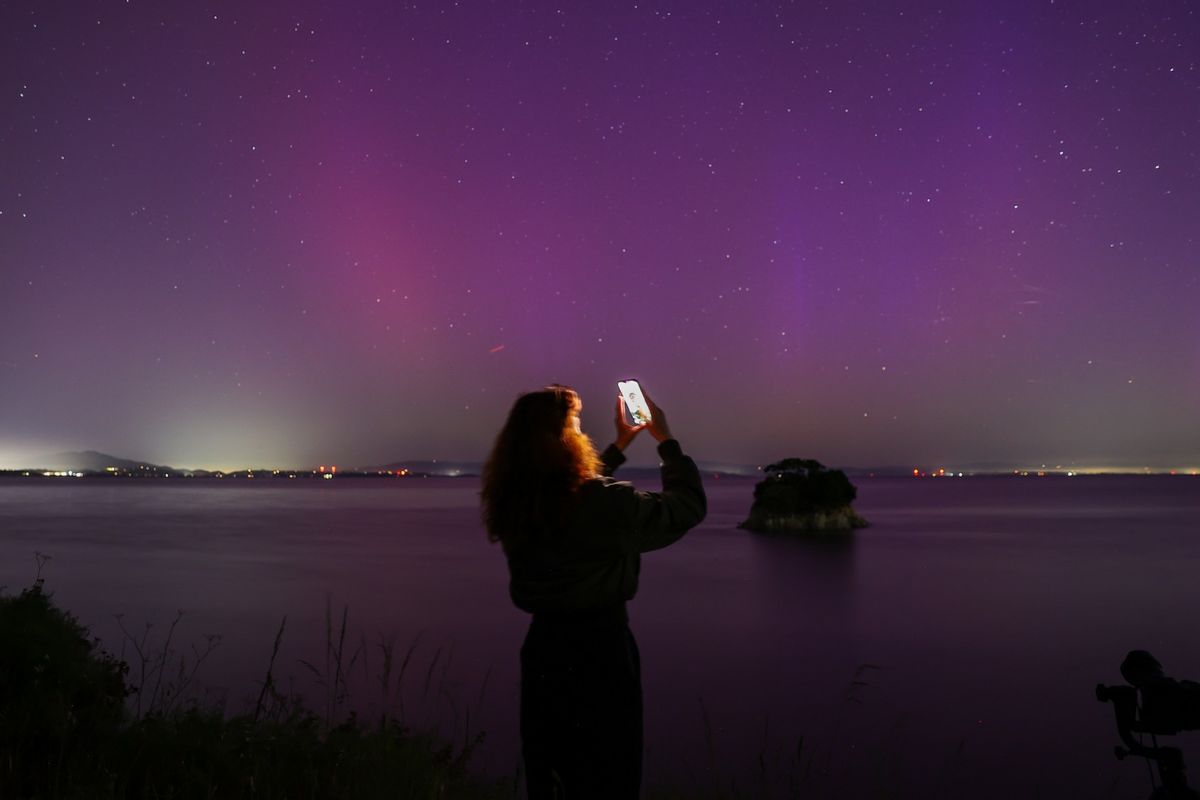On July 5, 2023, the Ariane 5 launch vehicle took flight for the last time, thus ending a storied 27-year career for what was Europe’s first heavy-lift rocket. Nearly ten months later, Arianespace is back at the launchpad with its new and advanced heavy-lift workhorse: the Ariane 6.
For the first time, the central core and boosters for Ariane 6 have been delivered to the pad at the ELA-4 launch complex in Kourou, French Guiana, officially marking the start of the maiden launch campaign.
On Wednesday, April 24, the central core of the rocket — consisting of the main booster and upper stage — was transported 800 meters from the launcher assembly building to the ELA-4 pad, where it was installed on the launch table via a crane and with the assistance of automated guided vehicles (AGV).
Over the next two days, Arianespace worked to deliver the vehicle’s two P120C solid rocket boosters to the pad, eventually mounting them to the launch table on either side of the central core. This makes up the Ariane 62 configuration that will fly the vehicle’s first mission.
The first Ariane 6 solid rocket booster being transported to the ELA-4 launch site for integration. (Credit: ESA/ArianeGroup/CNES)
Much like its predecessor, Ariane 6 is a two-stage design, powered by engines that burn liquid hydrogen and liquid oxygen. The first stage features a Vulcain 2.1 motor — an improved version of the Vulcain 2 engine that flew on Ariane 5. The second stage on the other hand has a newly-designed Vinci engine, capable of producing 180 kN of thrust in vacuum.
Ariane 6 is configured to fly with either a single pair or two pairs of P120C strap-on solid rocket boosters, which produce a major percentage of the total thrust at liftoff. Each booster contains 142 tons of solid propellant and can deliver up to 4,650 kN of thrust.
The payload capacity of Ariane 6 varies depending on the flight configuration used. The Ariane 62 version using two boosters is capable of delivering up to 10,350 kg to low-Earth orbit (LEO) and 4,500 kg to geostationary transfer orbit (GTO), while the Ariane 64 variant with four boosters can place up to 21,500 kg into LEO and 11,500 kg into GTO.
“Getting Ariane 6 to launch and to re-establish Europe’s access to space is of highest priority for ESA to resume regular rocket launches from Europe’s Spaceport,” states ESA Director General Josef Aschbacher. “Having the rocket stages together on the launch pad marks the start of a launch campaign and shows we are almost there; soon we will see this beauty soar to the skies.”
The next step in the initial Ariane 6 campaign consists of mating the P120C boosters to the central core, thus acting as the support mechanism for the launch stack. Once mounted, teams will complete the necessary mechanical and electrical connections.
Afterward, all that would remain to complete the first Ariane 6 is the installation of the fairing with the encapsulated payloads inside. This will take place a few weeks before the scheduled launch date.
These vehicle integration operations were conducted under the main jurisdiction of ESA, with support from ArianeGroup and the French space agency CNES.
“Seeing the new European launcher standing on the launch zone marks the completion of years of work in the design offices and production plants of ArianeGroup and all our industrial partners in Europe,” said ArianeGroup CEO Martin Sion. ”This event also signals the beginning of a new step of the first flight campaign, with all the challenges and complexities that this entails. The members of our Space Team Europe are bringing all their know-how and expertise to bear to ensure that the first flight will be a total success.”

The first Ariane 6 central core preparing to undergo integration. (Credit: ESA/ArianeGroup/CNES)
Ariane 6 is designed with the ability to launch a number of mission configurations. These could vary from LEO missions involving satellite constellations to dual-launch Galileo missions to medium-Earth orbit (MEO), along with single launch and dual launch for geosynchronous/geostationary satellites.
For its maiden launch, Ariane 6 will attempt to deliver a set of small payloads and experiments to LEO for customers such as ESA, NASA, European universities, and various commercial companies.
Some payloads consist of CubeSats, while others will remain attached to the upper stage to document the mission. Two payloads will come back to Earth in the form of reentry capsules, designed to test new materials.
Arianespace and ESA are currently targeting a window between June 15 and July 31, 2024, for Ariane 6’s first flight.
“The Ariane 6 program is now entering its final stretch before the inaugural flight from the Europe’s Spaceport in French Guiana. European sovereignty of access to space is once again possible, thanks to the hard work of the ESA, ArianeGroup and CNES teams,” said Philippe Baptiste, CEO of CNES. ”I’d like to thank them and send them my best wishes for the final steps. Go Ariane 6!”
(Lead image: The first Ariane 6 central core stands inside the mobile building at the ELA-4 launch complex in Kourou in preparation for its maiden launch. Credit: ESA/ArianeGroup/CNES)

Dr. Sarah Adams is a scientist and science communicator who makes complex topics accessible to all. Her articles explore breakthroughs in various scientific disciplines, from space exploration to cutting-edge research.







